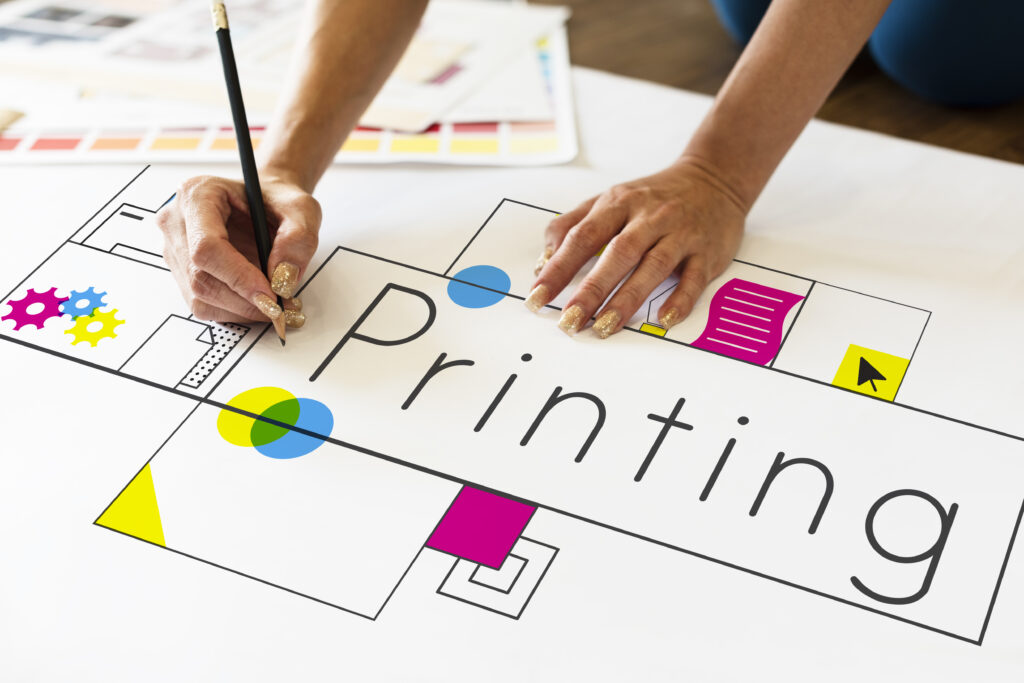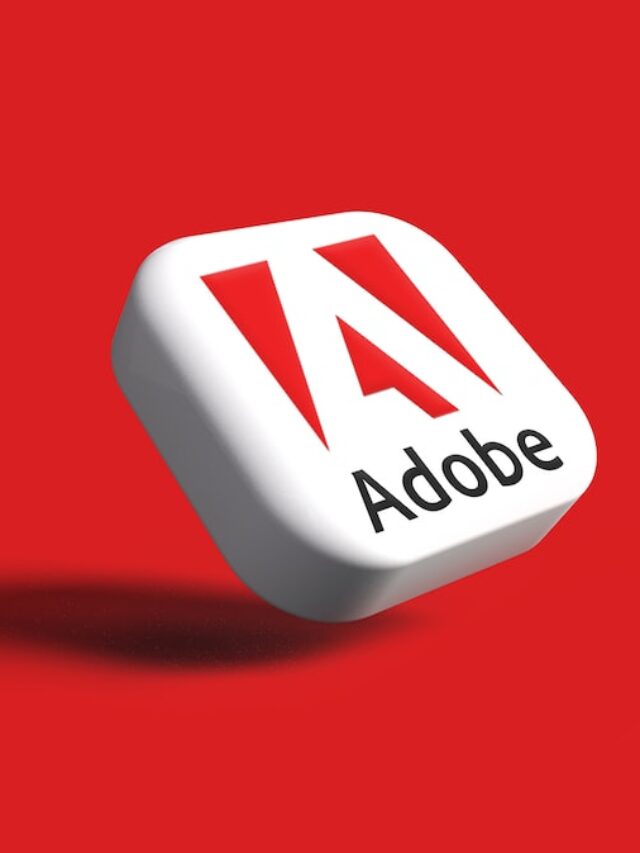What Is Computerized Printing?
Computerized Printing, Often Referred To As Digital Printing, Is A Modern Printing Process That Involves Transferring Digital Images Or Text Directly From A Computer To A Printer. Unlike Traditional Printing Methods Such As Offset Or Screen Printing, Computerized Printing Does Not Require Physical Printing Plates. Instead, It Uses Advanced Digital Technology To Create High-Quality Prints With Speed, Accuracy, And Versatility. Below Is A Detailed Description Of The Topic:
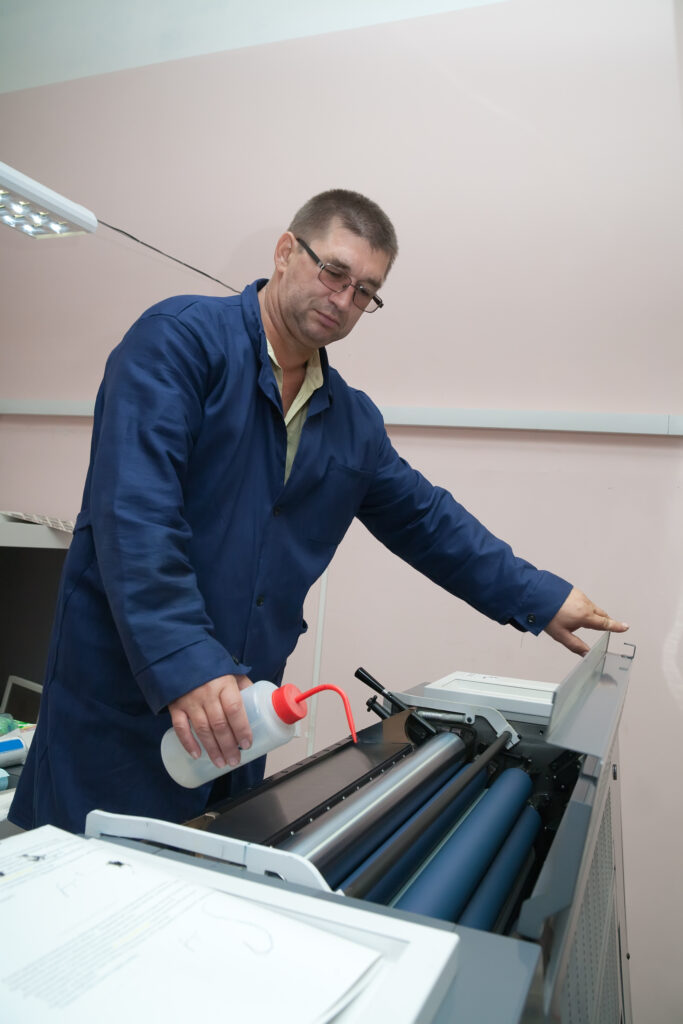
1. Definition And Basics Of Computerized Printing
Computerized Printing Is A Technology-Driven Process Where Digital Files, Such As Images, Graphics, Or Text, Are Printed Directly Onto Various Media Using A Digital Printer. These Files Are Typically Created Using Graphic Design Software Such As Adobe Photoshop, Illustrator, Or Coreldraw And Can Be Immediately Modified Or Customized Before Printing.
How It Works:
A Computer Sends Digital Designs Or Content To A Printer Through Software.
The Printer Interprets The Data And Applies It To The Printing Medium, Such As Paper, Fabric, Or Plastic.
Main Differences From Traditional Printing:
Traditional Methods Such As Lithography Require The Creation Of Printing Plates, While Computerized Printing Eliminates This Step, Saving Time And Cost.
2. Types Of Computerized Printing
Computerized Printing Includes A Variety Of Methods, Each Suitable For Different Applications:
Inkjet Printing:
Ideal For High-Quality Image Reproduction.
Commonly Used To Print Photos, Banners, And Posters.
Works By Spraying Tiny Drops Of Ink Onto The Surface.
Laser Printing:
Popular For Text-Heavy Documents And Fast Printing.
Uses Laser Technology And Toner To Produce Sharp, Clean Results.
Often Used In Offices For Commercial-Grade Prints.
3d Printing:
An Advanced Form Of Computerized Printing.
Builds Three-Dimensional Objects Layer By Layer From Digital Models.
Widely Used In Industries Such As Manufacturing, Healthcare, And Engineering.
Sublimation Printing:
Transfers Dye Onto Materials Such As Fabric Or Ceramic.
Commonly Used For Custom T-Shirts, Mugs, And Other Promotional Items.
Uv Printing:
Uses Ultraviolet Light To Instantly Cure Ink.
Suitable For Printing On Non-Porous Surfaces Such As Glass, Metal, And Acrylic.
3. Benefits Of Computerized Printing
Computerized Printing Offers Many Benefits, Making It A Preferred Choice In Modern Industries:
Speed and Efficiency:
Prints Can Be Produced Quickly Without The Need For Pre-Production Setup Such As Plate Making.
Cost-Effective For Short Runs:
Perfect For Printing Small Quantities, As There Is No Need For Large-Scale Setup.
Customization And Personalization:
Allows Variable Data Printing Such As Adding Names Or Addresses To Each Print.
High Precision And Quality:
Digital Technology Ensures Accurate Color Reproduction And Sharp Details.
Versatility:
Can Print On A Variety Of Materials Including Paper, Fabric, Plastic, Wood, And Metal.
4. Applications Of Computerized Printing
The Versatility Of Computerized Printing Has Made It An Integral Part Of Various Industries:
Graphic Design And Marketing:
Used To Create Brochures, Flyers, Posters, Business Cards, And Banners.
Textile Industry:
Widely Used To Design Custom Clothing, Curtains, And Upholstery.
Publishing:
Produces Books, Magazines, And Catalogs With Vibrant Visuals And Professional Finishes.
Packaging:
Enables High-Quality Printing On Boxes, Labels, And Wrappers.
Promotional Products:
Customizes Items Such As Mugs, Phone Cases, And Calendars For Branding And Marketing.
Personal Use:
Used For Photo Albums, Greeting Cards, And Personalized Gifts.
5. Limitations Of Computerized Printing
Despite Its Many Advantages, Computerized Printing Has Certain Limitations:
Higher Cost For Large-Volume Production:
Traditional Printing Methods Such As Offset Printing May Be More Economical For High-Volume Production.
Limited Texture Options:
Despite Being Versatile, It Cannot Mimic Some Of The Textures Achieved With Traditional Techniques.
Dependence On Technology:
Well-Maintained Printers And Updated Software Are Required For Optimal Results.
6. The Future Of Computerized Printing
The Evolution Of Computerized Printing Continues To Shape The Printing Industry. Innovations Such As 3d Printing, Nanotechnology, And Ai-Driven Design Tools Are Expanding Its Capabilities. As The Demand For Environmentally Friendly Practices Grows, Computerized Printing Is Also Incorporating Sustainable Techniques, Such As Using Biodegradable Inks And Recyclable Materials.
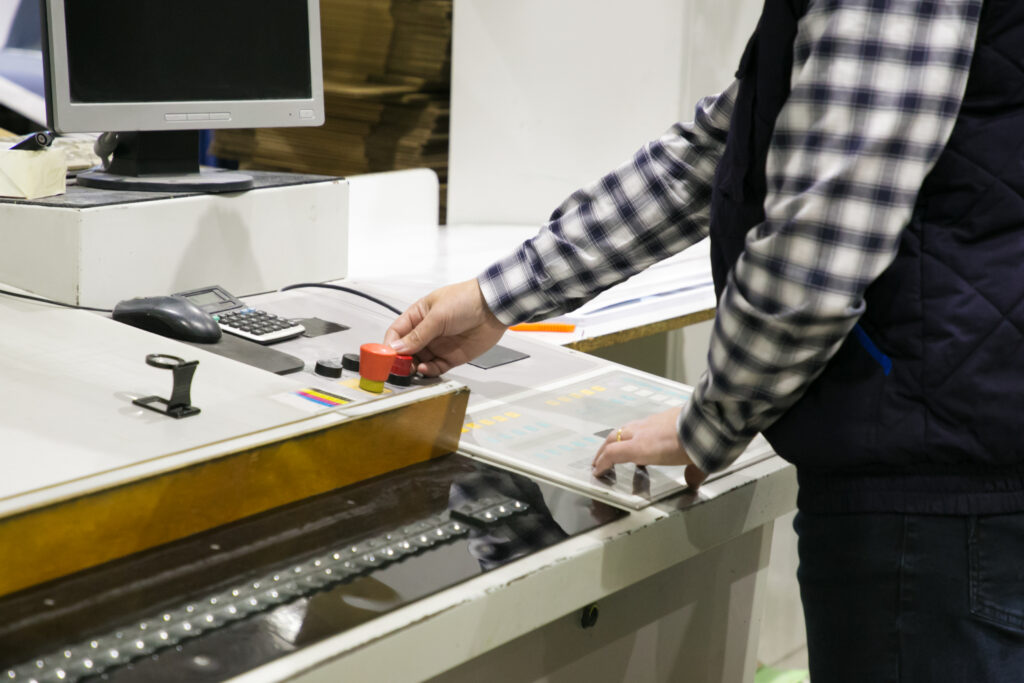
Features And Benefits Of Computerized Printing
Computerized Printing, Also Known As Digital Printing, Has Revolutionized The Printing Industry By Offering Advanced Technology And Incredible Efficiency. Let’s Look At Its Features And Associated Benefits In Detail:
Features Of Computerized Printing
1. High Precision And Accuracy
Digital Printers Use Advanced Software And Technology To Make Each Print Highly Accurate And Consistent.
Features Such As Pixel-Level Accuracy Eliminate The Risk Of Errors That Commonly Occur In Traditional Printing.
2. Customizability
Computerized Printing Allows For Personalized Designs, Such As Printing Variable Data (For Example, Custom Names Or Addresses On Flyers).
Users Can Easily Edit Or Modify The Design Digitally Before Printing.
3. Speed and Efficiency
Digital Printing Is Much Faster Than Offset Or Screen Printing, Especially For Small-To-Medium Print Runs.
There Is No Need For Lengthy Setup Processes Such As Making Plates Or Screens.
4. Wide Range Of Material Compatibility
It Supports Printing On A Wide Variety Of Materials, Including Paper, Fabric, Plastic, Glass, And Metal.
Special Printers Can Also Handle Textured Surfaces Or Unique Media Types.
5. Cost-Effectiveness Due To Short Lead Times
Unlike Traditional Printing, Expensive Setup Equipment Is Not Required, Making Small-Volume Jobs More Affordable.
Printing Only The Required Quantity Reduces Waste.
6. On-Demand Printing
Computerized Systems Can Print Immediately, Making It Possible To Handle Last-Minute Orders Without Delay.
There Is No Need To Store Large Amounts Of Pre-Printed Material Because New Prints Can Be Made As Needed.
7. High-Quality Output
With Advanced Resolution Capabilities, Computerized Printing Delivers Vibrant Colors, Sharp Images, And Detailed Designs.
It Provides Consistent Quality Throughout The Print Job, Ensuring Professional Results.
8. Eco-Friendly Option
Many Digital Printers Use Environmentally Friendly Inks And Paper, Which Contribute To Sustainable Printing Practices.
Reduces Waste Due To Precise Production With Minimal Surplus.
Benefits Of Computerized Printing
1. Time Savings
With No Need For Plates Or Complicated Setup, Computerized Printing Reduces Production Time Significantly.
Ideal For Businesses That Need Quick Turnarounds For Marketing Campaigns Or Promotional Materials.
2. Cost Efficiency
For Small And Medium Print Runs, Digital Printing Is More Economical Than Traditional Methods.
Storage Costs Are Reduced As Items Can Be Printed On Demand Rather Than Printed In Bulk.
3. Flexibility In Design
Offers Complete Creative Freedom With Easy Edits And Updates To Designs Before Printing.
Real-Time Previews Of Designs Help Avoid Costly Errors.
4. Versatility
Capable Of Handling A Variety Of Printing Jobs, From Brochures And Business Cards To Large Banners And Posters.
Works For Both Personal And Business Use, Accommodating Diverse Needs.
5. Less Waste
Computerized Systems Ensure That Only The Required Quantity Is Printed, Avoiding Excess Inventory.
Mistakes Can Be Digitally Corrected Before Printing, Preventing Material Waste.
6. Better Customization
Personalized Printing Allows Businesses To Tailor Marketing Materials To Specific Audiences, Boosting Engagement.
Features Like Qr Codes, Serial Numbers, And Personalized Messaging Improve The Customer Experience.
7. Better Color Control
Advanced Color Management Tools Ensure Consistent And Vibrant Colors In Every Print.
Pantone Matching And Other Features Make It Easy To Meet Brand-Specific Color Requirements.
8. Supports Small Businesses
Affordable Short-Run Printing Enables Small Businesses To Compete With Larger Companies When It Comes To Marketing Materials.
Quick Turnaround Times Allow Small-Scale Enterprises To Quickly Adapt To Market Trends.
9. Global Access
Digital Files Can Be Shared Across Regions, Enabling Printing In Multiple Locations Without Sending Physical Materials.
Facilitates Remote Collaboration And Printing Services.
Types Of Computerized Printing
Computerized Printing Refers To Modern Printing Methods That Use Computers And Advanced Digital Technologies To Efficiently Create High-Quality Prints. Unlike Traditional Printing Methods, Computerized Printing Allows For Precise Control, Quick Turnaround Times, And Flexibility In Design And Production. This Has Made It An Important Tool For Industries Such As Advertising, Publishing, Textiles, And Packaging.
2. Main Types Of Computerized Printing
Here Are The Most Common Types Of Computerized Printing Technologies:
Digital Printing
Digital Printing Involves Transferring Digital Files Directly To A Printing Machine. This Eliminates The Need For Printing Plates, Making It Ideal For Short Runs And Personalized Printing.
Key Features: Fast Production, Minimal Setup Time, And Customizable Designs.
Applications: Flyers, Brochures, Business Cards, And Personalized Products Such As Mugs Or T-Shirts.
Types Of Digital Printing:
Inkjet Printing: Uses Liquid Ink Sprayed Onto The Surface. Common For Posters And Fine Art Prints.
Laser Printing: Uses Toner And Laser Technology. Popular For Documents And Office Printing.
Offset Printing
Although It Is Not Fully Digital, Offset Printing Has Been Revolutionized With Computerized Plate-Making Processes. This Method Transfers Ink From A Metal Plate To A Rubber Blanket And Then To The Printing Surface.
Key Features: High Quality, Cost-Effective For Mass Production.
Applications: Large Volumes Of Magazines, Newspapers And Books.
Advances: Computer-To-Plate (Ctp) Technology For Automated Plate Creation.
Screen Printing (Computer-Assisted)
Screen Printing Traditionally Involved Manual Stenciling, But Computerized Designs Now Streamline The Process.
Key Features: Durable Prints, Vibrant Colors, Suitable For Irregular Surfaces.
Applications: Printing On Textiles, Promotional Materials And Ceramics.
Advances: Computer-Assisted Design (Cad) Tools For Creating Detailed Stencils.
3d Printing
A Cutting-Edge Form Of Computerized Printing, 3d Printing Uses Digital Designs To Create Three-Dimensional Objects Layer By Layer.
Key Features: Customizable, Versatile And Capable Of Creating Complex Geometries.
Applications: Prototyping, Medical Implants, Automotive Parts And Even Fashion Accessories.
Materials Used: Plastics, Resins, Metals And Ceramics.
Sublimation Printing
Sublimation Printing Uses Heat To Transfer Dye Onto Materials Such As Fabric, Ceramic Or Metal. It Is Done Using Digital Designs That Are Printed On Transfer Paper And Then Applied To The Substrate.
Key Features: Permanent, Vibrant Prints That Will Not Fade Or Peel.
Applications: Custom Clothing, Mugs And Promotional Items.
Flexographic Printing
Flexographic Printing Is A Computerized Version Of The Traditional Relief Printing Method. It Uses Flexible Plates And Is Highly Efficient For Mass Production.
Key Features: Fast, Suitable For Uneven Surfaces And Cost-Effective For Long Runs.
Applications: Packaging Materials, Labels And Corrugated Boxes.
Advancement: Computer-To-Plate System For Quick Setup.
Gravure Printing (Digitally Enhanced)
Gravure Printing Involves Engraving The Image Onto A Cylinder, But Modern Computerized Methods Increase Accuracy And Speed. Key Features: High-Quality, Continuous-Tone Images. Applications: High-Volume Printing Such As Magazines, Packaging And Decorative Materials. Advancement: Computer-Assisted Engraving And Proofing Systems.
Uv Printing
Uv Printing Uses Ultraviolet Light To Cure Or Dry The Ink Immediately After It Is Applied To The Surface. Key Features: Quick Drying, Bright Colors And Compatibility With A Wide Range Of Materials. Applications: Printing On Glass, Wood, Plastic And Promotional Items.
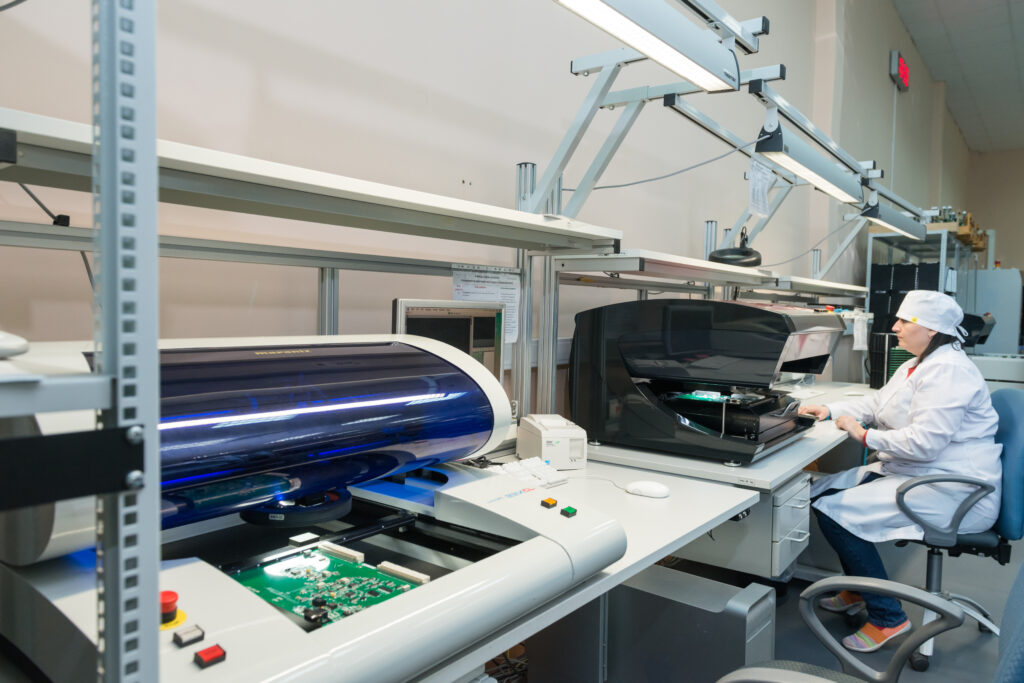
3. Advantages Of Computerized Printing Accuracy:
Provides Highly Accurate And Detailed Prints. Customization: Easily Adapts To Unique Designs And Personalization. Speed: Quick Turnaround Times, Even For Complex Projects. Eco-Friendly Options: Many Computerized Methods Reduce Waste And Use Sustainable Materials.
4. Emerging Trends In Computerized Printing
Eco-Friendly Inks: Focus On Biodegradable And Water-Based Inks.
Ai Integration: Automated Color Correction And Quality Control.
Hybrid Printing Systems: Combining Digital And Traditional Methods For Improved Efficiency.
Smart Packaging: Qr Codes And Interactive Designs Printed Directly On Packaging.
Applications Of Computerized Printing
Computerized Printing Has Revolutionized The Way We Produce Printed Material, Offering Unparalleled Precision, Speed, And Versatility. Its Applications Are Very Wide And Span Across Various Industries. Below Is An In-Depth Explanation Of The Key Areas Where Computerized Printing Has Made A Significant Impact.
1. Commercial Printing
Computerized Printing Plays A Vital Role In Producing High-Quality Materials For Businesses. These Include:
Brochures And Flyers: Used For Marketing Campaigns, These Are Printed With Vibrant Colors And Precise Details.
Business Cards: Customizable And Professional Designs Are Easily Produced In Bulk.
Posters And Banners: Mass Printing Is Essential For Advertising And Event Promotions.
Catalogs And Magazines: High-Volume Production With Consistent Quality Is Made Possible By Computerized Printing.
2. Publishing Industry
The Publishing Industry Has Seen Great Benefits From Computerized Printing, Such As:
Books: From Novels To Textbooks, Mass Production Is Streamlined And Cost-Effective.
Newspapers And Magazines: Daily Or Weekly Print Is Handled With Speed And Accuracy.
On-Demand Publishing: Self-Publishing Authors Can Print Small Quantities At A Low Cost, Reducing Waste.
3. Packaging And Labeling
Modern Packaging Relies Heavily On Computerized Printing For Both Aesthetics And Functionality:
Product Packaging: High-Resolution Designs Make Products Stand Out On Shelves.
Labels: This Includes Barcodes, Qr Codes, And Product Information, Which Are Printed With Precision.
Custom Packaging: Personalized Designs Meet Branding Needs.
4. Advertising And Marketing
In The World Of Advertising, Creativity Meets Technology Through Computerized Printing:
Billboards And Hoardings: Large-Scale, High-Quality Prints For Outdoor Advertising.
Vehicle Wraps: Attractive Designs Are Printed To Wrap Around Cars, Trucks, And Buses.
Pop (Point Of Purchase) Displays: Custom-Designed Stands To Attract Customers Into The Store.
5. Apparel And Clothing
The Fashion And Clothing Industries Use Computerized Printing For Customized Designs:
T-Shirts And Hoodies: Designs Can Be Printed Directly Onto Clothing Using A Dtg (Direct-To-Garment) Printer.
Custom Fabric: Patterns Are Digitally Created And Transferred To Textiles For Unique Designs.
Fashion Accessories: Bags, Caps And Shoes Are Personalized With Printed Graphics.
6. Personalized And Custom Products
Computerized Printing Makes It Easy To Create One-Of-A-Kind Products, Including:
Photo Gifts: Printed Mugs, Photo Albums And Calendars For Personal Use Or Gifts.
Custom Stationery: Personalized Notebooks, Planners And Greeting Cards.
3d Printing Applications: Printing Three-Dimensional Objects Such As Prototypes, Gifts Or Jewelry.
7. Signage
In The Signage Industry, Computerized Printing Ensures Visibility And Durability:
Indoor And Outdoor Signs: Clear And Weather-Resistant Prints For Offices, Shops, And Public Spaces.
Way Signs: Used To Guide Visitors In Malls, Hospitals, And Airports.
Digital Printing For Led Displays: Vibrant, Detailed Graphics For Illuminated Signage.
8. Industrial Applications
Many Industries Leverage Computerized Printing For Functional And Decorative Purposes:
Electronics: Printing Of Circuit Boards And Functional Components.
Automotive: Labels, Dashboards, And Decals For Vehicles.
Architectural Models: 3d-Printed Prototypes And Visualizations.
9. Education And Research
Schools, Colleges, And Research Institutes Use Computerized Printing For A Variety Of Needs:
Educational Materials: Workbooks, Handouts, And Visual Aids.
Scientific Posters: High-Resolution Posters For Academic Conferences.
3d Printing For Research: Prototypes And Models In Engineering And Medical Research.
10. Medicine And Healthcare
In Healthcare, Computerized Printing Is Essential For Accuracy And Customization:
Medical Records: Printed Labels And Documents For Patient Records.
Medication Labels: Precision Printing For Drug Packaging And Information.
3d Printing For Healthcare: Prosthetics, Surgical Instruments And Organ Replicas.
11. Arts And Creativity
Artists And Creative Professionals Benefit From Computerized Printing:
Fine Art Prints: High-Quality Reproductions Of Artwork.
Graphic Design Projects: Posters, Illustrations And Branding Materials.
Custom Artwork: Personalized Prints For Clients.
12. Event Management
Events Depend On Computerized Printing To Create A Memorable Experience:
Invitations And Tickets: Custom-Printed Designs For Weddings, Conferences And Concerts.
Decorative Materials: Printed Backdrops, Banners And Signage For Events.
Promotional Materials: Souvenirs Such As Tote Bags, Pens And Keychains.
13. Environmentally Friendly Printing
Modern Computerized Printing Methods Often Incorporate Environmentally Friendly Practices:
Recycled Materials: Printing Is Done On Recycled Paper And Other Materials.

